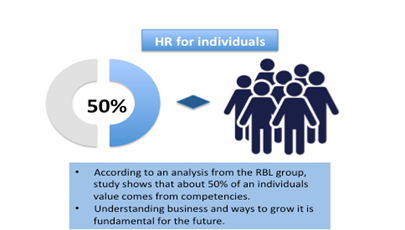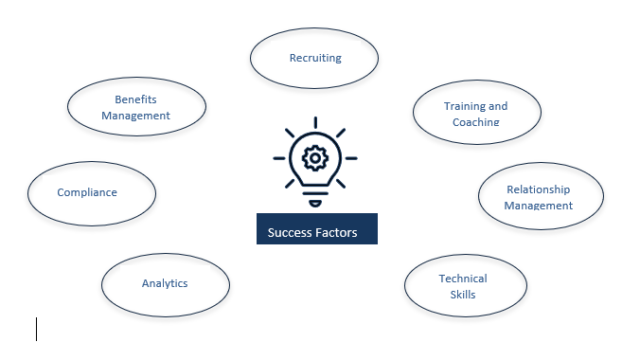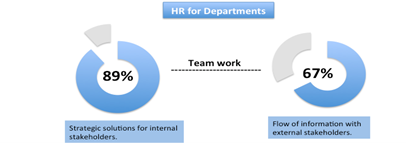5 Reasons To Ditch Your HR Department
In years past, recruiting was straight-forward and human resource management was mainly in-house. Today, however, there is a trend in more HR functions being outsourced while in-house HR teams continuously focus on management. Research shows that the rapid change in technology is the primary drive behind this as more and more companies grapple with non-traditional ways of working such as: consulting, freelancing, and remote work.
In 2015, the Society of Human Resource Management (SHRM) critically evaluated and reported a workforce analysis of how an organizational staff size should influence a company’s HR metrics. The study showed an average of 2.57 HR-to-employee ratio for all organizations. But this is mostly applicable to medium to large organizations where there is a balance in the structure of management as every HR FTE (Full Time Equivalence) has an assigned functional role compared to smaller business HR FTE’s with cross-functional duties of recruiting, benefits management, and strategic relations.
Nonetheless, while several experts have predicted that the 2020s is the decade for companies to restructure their entire human resource department if they hope to stay competitive, we wanted to look at some of the reasons behind these assertions.
1. Technology and Analytics Taking Over:
HR is evolving from in-house personnel management into an era of technology. Tracie Sponenberg, a senior vice president of HR at the Granite Group says, “We used to be about compliance, party planning and benefits.” she goes on “To some extent, there are still some companies that see HR as a purely tactical kind of role. But the good ones, the smart ones, see HR as a strategic partner.”
Another expert from global practice lead for talent and HR operations from Accenture Jill Goldstein, explains that she thinks Human Resource positions are going to develop in ways that their professions will be “sought-out” in the enterprise.


As that isn’t far from the truth, technology and data analytics will improve HR functionalities and optimize efficiency as it plays a major role in every organization. The development of software that automates a lot of mundane tasks not only reduces the risk of human error but also reduces long-term costs. This means companies will focus on hiring tech-savvy HR professionals.
2. More Technical and Expansive skillset :
Following up on the trend of the future of work being more technical, several experts have not only evaluated the lack of skills among today’s HR professionals, but they also predict that Human Resource Management professionals will be required to attain a more technical set of skills to be competitive.
For instance, A Cisco executive VP, Fran Katsoudas’ changed her title to chief people officer and explained that the reason for the change was that it was her way of learning and understand the company by engaging in the business strategy side of it. She further predicts that by 2025, technology will help create time for HR managers to focus more on people. “Today, Technology is bringing a level of intelligence to HR that really thrusts HR into a compelling consultancy role”, she adds “as the tasks will take on added analytical skills and coaching”.

3. Automation and Workforce Rebranding:
Many organizations are switching to a remote working environment. In a 2017 Harvard research sourcing SHRM’s 2017 employee benefit report, 60% of companies had ad-hoc benefits and the number increased to 69% in 2019. Julie Wilson, a founder of the Institute for Future Learning and Instructor at Harvard says “Managing a virtual team requires managers to double down on the fundamentals of good management, including establishing clear goals, running great meetings, communicating clearly, and leveraging team members’ individual and collective strengths,”
According to the SHRM, by 2025 about 60% of Millennials will be open to newer job opportunities, which means HR will not only be responsible for a large source of candidates but must commit to new strategies and incorporate automation especially since opening new remote roles will also diversify the work environment.
4. HR and the Double Bottom Line:
As the competition for top talent tightens, companies are encouraging collaboration between HR and Marketing to incorporate recruiting into their marketing and branding strategies. This is often achieved through better benefit packages, of which remote work and work-life balance are at the top of the list. According to a recent survey by owllabs which included respondents from age 18-65, 34% of US workers would take up to a 5% pay cut in order to work remotely. And of those with a remote work option, 48% would like to telecommute more. For a company in the advanced stages of its digital transformation, this benefit can transcend its branding to lead to a real impact on its bottom line with savings from reduced pay and office leasing expenses and a double bottom line.
By offering these packages, organizations will not only attract but also be able to retain top talents. A chief HR officer at Ally Financial Services says, “Recruitment marketing exists now, but given the demographics and importance of attracting talent, more organizations could add those [benefits],” and she is right!
5. Regulation and Compliance Problems:
Compliance is a major challenge for every organization regardless of industry. In most organizations, this is the duty of the HR department. The digitization of work and the prevalence of technology in our daily lives have led to growing concerns about the use of technology and its impact on our privacy. This has led to the creation of new regulations such as the EU’s General Data Privacy Regulation (GDPR) and California’s Consumer Protection Act (CCPA) to govern the collection, storage, and usage of data, and are predicted by experts to only be the beginning of many more regulations to come.
Another challenge to HR professionals in multistate organizations involves integrating newer policies to comply with state laws that allow the legal use of recreational drugs like marijuana, with the consensus being for this trend to continue.
Regulations such as the federal family and medical leave act (FMLA), Employment verification (form 1-90), and other regulations still being a staple of human resource management means today’s HR professionals would need to keep up with the changing regulations in order to stay competitive. This will be a challenge especially for small to medium-sized businesses how may not have the resources to keep up.
So, what will 2020 onwards be like?


As it turns out, HR is not dead, it is simply undergoing a digital transformation. While this requires re-strategizing, upskilling, and a sophisticated network of external collaborators, it makes it even more imperative that an organization invests in both the qualitative and quantitative aspects of its HR department.
Historically, the norm for HR-to-employee ratio for medium-sized enterprises was about 1 to 100, but we expect that ratio to decrease as the more mundane tasks of HR departments become automated while the individuals themselves act as ‘People Consultants’. Effective collaboration with internal stakeholders and external solutions providers, advanced technical skillsets, and digital adaptability will separate the leaders from the pack.
Human Resource professionals will not only be required to be more technical, but they will also be required to play a more strategic role as centerpieces within the organization hence intensifying the need for advanced soft and management skills.


For organizations without the resources to acquire advanced HR management systems or hire highly technical Human Resource professionals, facing the prospects of such change can be a challenge. The good news is you don’t have to face this challenge alone since you have a partner in Quvah. You can request a free consultation with one of our expert Human Resource consultants here. We will work with you to determine the maturity level of your organization and determine the best course of action for you and your company
